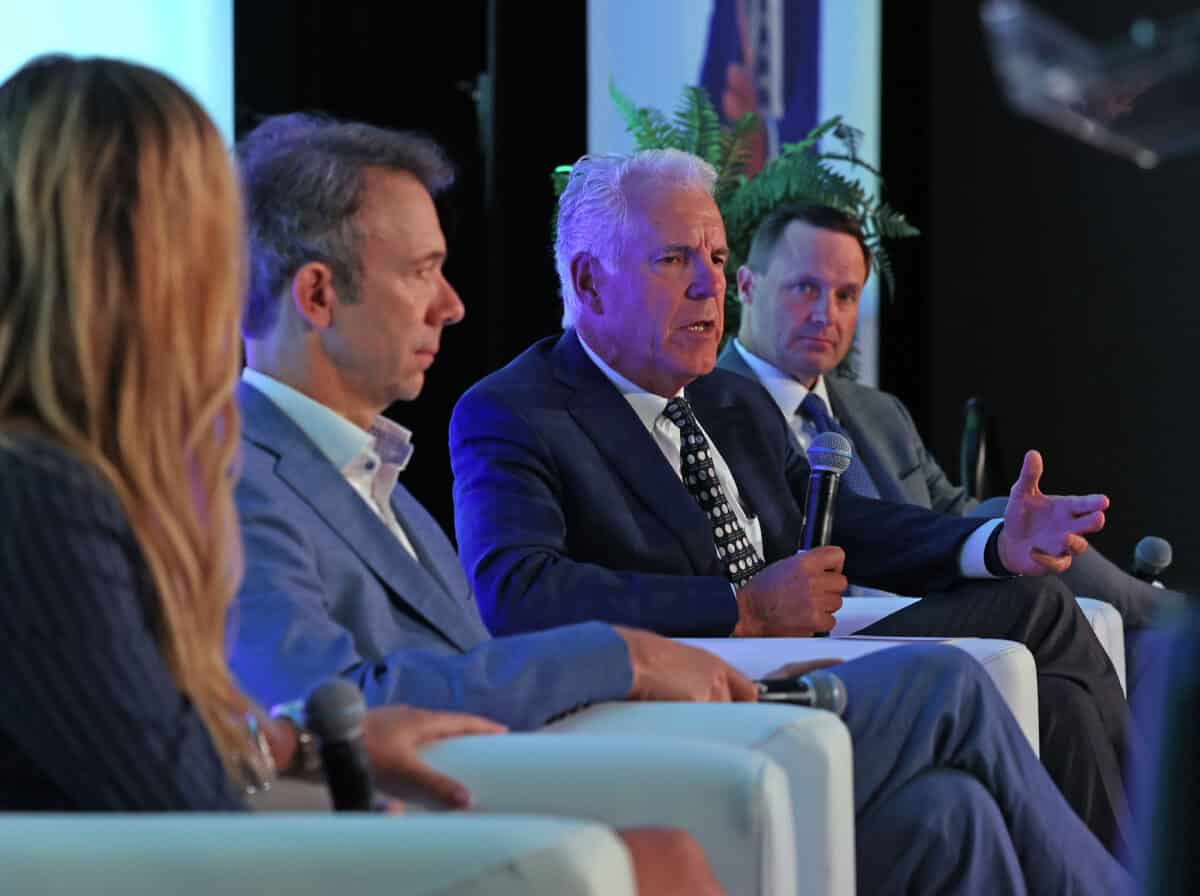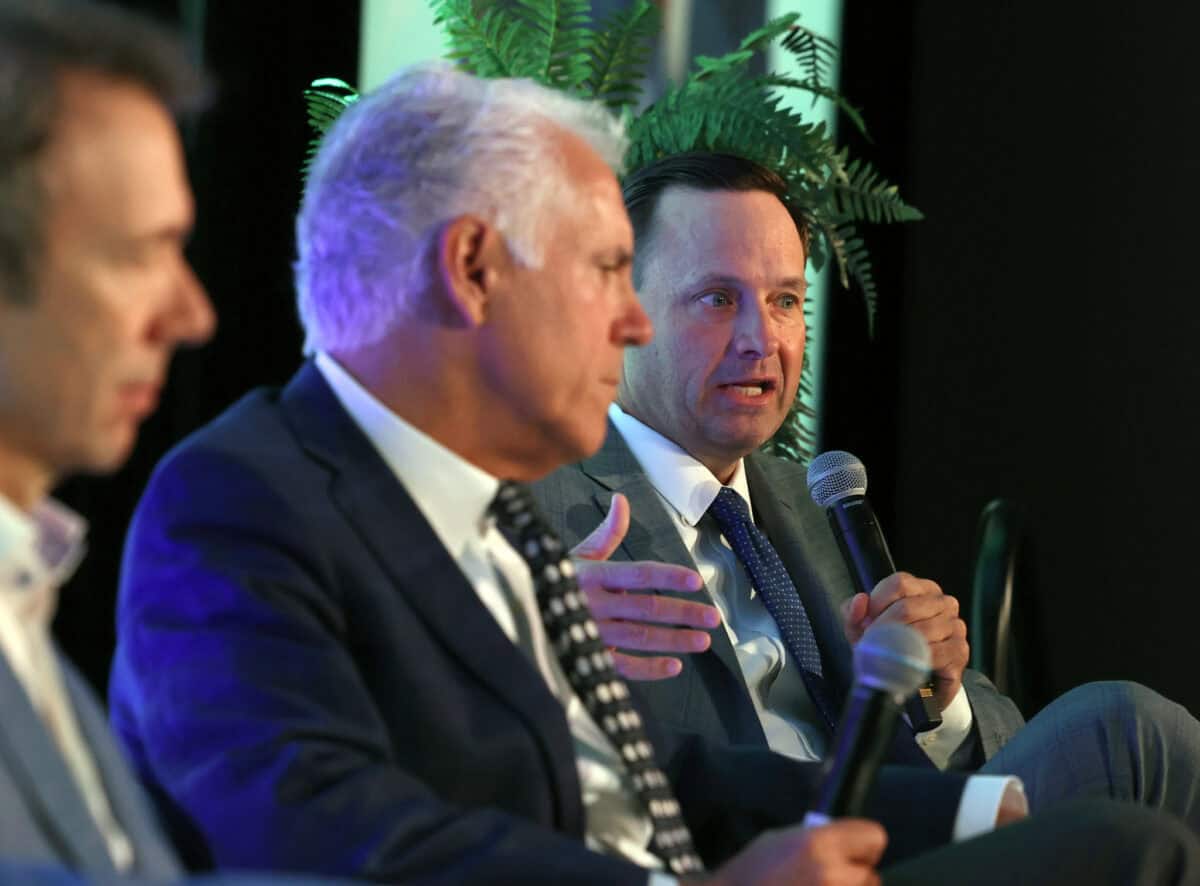
Guest Blogger: Sarah Sutton is the founder of Endurance PR, a boutique life sciences communications firm that helps early-stage biotech companies and innovation ecosystems tell the stories that move science forward.
Every investor I’ve ever met is allergic to uncertainty.
And in 2025, uncertainty feels like the only constant in biotech. Funding has consolidated into a handful of mega rounds for companies with advanced clinical data, while early-stage founders, once able to raise on bold visions and scientific promise, must now confront investors with tighter wallets and higher expectations. Meanwhile, U.S. companies face global competition and fluctuating government support.
This was the conversation at the 2025 Align Conference, MassBio’s annual early stage and funder partnering conference, designed to bring biotech startups together with investors and strategic partners.
The day’s first panel, “Strength in in Connection: building a National Life Sciences Network,” featured speakers who did not gloss over the realities of today’s biotech market.
So what is an early-stage biotech to do when success depends on building confidence in conversations with investors and potential partners?
As someone who helps early-stage biotech companies craft stories that resonate with investors and partners, these were my key takeaways from the discussion:
Companies that communicate best acknowledge the reality of the headwinds we’re all facing.
Investors, partners, patients, and peers, can all see through spin. Johannes Fruehauf, Co-Founder & Executive Chairman of LabCentral, CEO of BioLabs, and Founder Mission of BioCapital, reminded entrepreneurs not to wait for the market to get better but to “face current realities directly.”
The same principle applies in communications. Anticipate the hardest questions you’ll be asked and prepare honest, transparent answers that show you understand the challenges and are acing them head on.

Communicate both through and about your network.
In a volatile market, isolation is risk. As James Chappell, President & CEO of SCbio observed, many small companies fail not due to weak science, but from an inability to connect their work to the right audiences and allies.
Startups that frame their stories within a broader ecosystem — showing alignment with partners, funders, and collaborators — signal credibility and strengthen their odds of success. And having a pitch that is easy for your ecosystem partners to tell on your behalf means your story can travel faster and farther.
Think creatively and build your story – and your company – to endure.
As Fruehauf put it, “The light at the end of the tunnel is entrepreneurship.” Founders must tell stories that emphasize adaptability and forward motion. Investors want to feel confident in your ability to adapt – not just in your aspirational vision.
That means anchoring your narrative in a clear problem and an unshakable purpose, and articulating how your solution creates lasting value for both investors and patients.
When founders can articulate those throughlines – purpose, adaptability, and impact – the result is a narrative that outlasts a single market cycle.
Don’t forget patients – they’re at the center of everything.

This one speaks for itself and was a focal point in MassBio CEO Kendalle Burlin O’Connell’s opening remarks: patients can’t wait. They are the reason the industry exists, and the ultimate audience every biotech must serve.
Sure, your science is exciting. But so is your vision. Don’t get so bogged down in your scientific story that you forget to communicate the potential long-term impact of your work.
The moral of the story?
We’re all in this together, our audiences have expanded, and even the smallest, earliest companies must justify their existence by focusing not just on what they are building, but why it matters, and for whom.
As Chris Coburn, CIO at Mass General Brigham put it, Massachusetts’ success as a biotech leader was never accidental. It was the result of intentional connectivity. The next chapter of biotech leadership will depend on whether we can extend that model nationally, linking emerging hubs, investors, and policymakers in ways that keep science and patients at the center.
Building a resilient U.S. biotech economy depends on it.